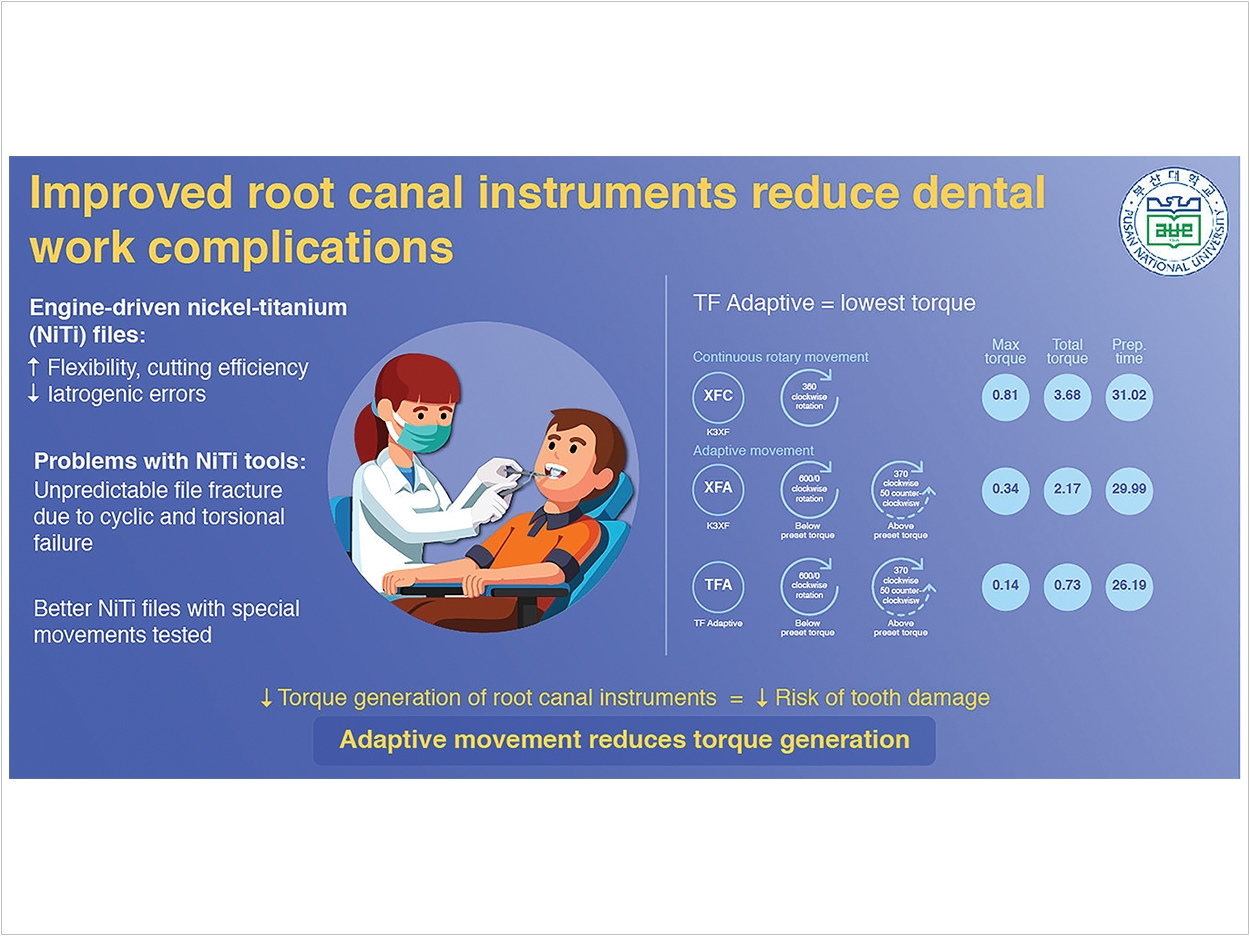
Adaptive movement of nickel-titanium (NiTi) files improves the success rate of root canal treatment by reducing the instruments’ torque generation, which then reduces the risk of tooth damage and file fracture, according to researchers at Pusan National University in South Korea.
Compared to stainless steel manual files, engine-driven NiTi files offer better flexibility and cutting efficiency, in addition to reduced iatrogenic errors, improving root canals. But NiTi files may experience cyclic fatigue and torsional failure problems during the procedure.
To reduce the risk of file fracture, the researchers tested heat-treated NiTi alloy files with specially designed rotary movements. Specifically, they tested Kerr Endodontics’ K3XF rotary system with continuous rotary movement (XFC), the K3XF with adaptive movement (XFA), and Kerr’s Twisted File with adaptive movement (TFA).
Adaptive motion combines continuous and reciprocating movements rotating 600°, stopping when the file is exposed to minimal or no load. It helps to reduce torque generation during instrumentation with NiTi rotary files, the researchers said.
Torque generation occurs when engine-driven NiTi files are used to remove root dentin. The generated torque implies the energy required to cut root dentin. It also represents the reaction stress to NiTi files as well as the root dentin.
To ensure consistent test conditions, endo-training resin blocks, which are acrylic blocks used in dentistry to simulate a root canal, were used for all instruments. Each block included an S-shaped artificial canal with a working length of 16 mm. The instrumental procedure was performed by a single, experienced endodontist to reduce operator errors for a total of 45 tests, or 15 per instrument.
The researchers found that TFA generated the lowest torque and concluded that the adaptive movement for NiTi files may reduce torque generation without increasing preparation time. Also, the researchers suggest that the cross-sectional area is more likely to affect torque generation that the movement of the file system. A smaller cross-sectional area may account for the lower torque generation in the TFA file system.
These findings are promising for instrumentation in root canal procedures in the future, the researchers said. Next, the researchers hope to assess the feasibility of these improved instruments in real-life situations in patients in the dental clinic as opposed to the well-controlled laboratory conditions of the study.
The study, “Comparison of In Vitro Torque Generation During Instrumentation with Adaptive Versus Continuous Movement,” was published by the Journal of Endodontics.
Related Articles
Better and Faster Root Canal Treatments: A Synopsis of the Latest High-Tech Protocols
Filling Root Canal Systems: A Carrier-Based Obturation Method
Preventative Endodontics: The Art of Avoiding a Root Canal












